The Cinnamon Cockatiel: An In-depth Look at This Colorful Bird
Discover the captivating world of Cinnamon Cockatiels, known for their warm, brownish-grey plumage. Learn about their care needs in our detailed guide.
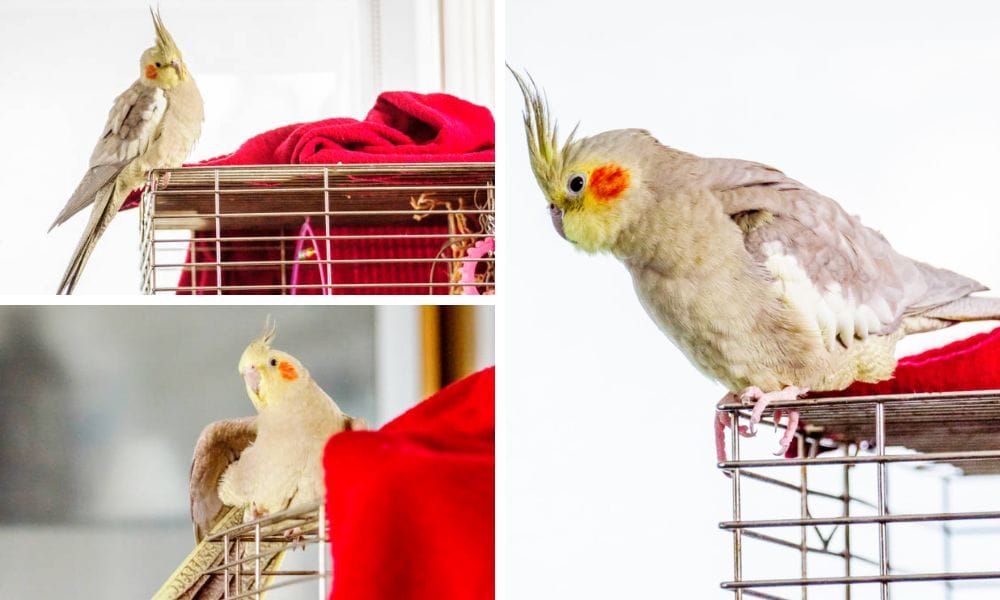
Cockatiels have charmed pet owners worldwide with their endearing personalities and striking features. Among the various color mutations, the cinnamon cockatiel stands out with its unique coloring and gentle demeanor. This article delves into the world of these fascinating birds, offering a comprehensive guide for both prospective and current cinnamon cockatiel owners.
Key Takeaways:
- Understand the distinct features and care requirements of cinnamon cockatiels.
- Learn about the genetic background and breeding of cinnamon cockatiels.
- Discover the behavioral traits and why they make such good pets.
What is a Cinnamon Cockatiel?
Cinnamon cockatiels are a captivating variation of the cockatoo family, known for their warm, chocolate brown feathers and pale yellow accents. Unlike the standard grey cockatiel, the cinnamon mutation alters the brown pigment in the feathers, resulting in a softer, more diluted coloration. This mutation affects both the overall plumage and the tail feathers, giving these birds a distinctive appearance.
Bird enthusiasts often seek out cinnamon cockatiels for their unique coloring. The cinnamon trait is a sex-linked recessive mutation, which means that it can be more challenging to breed than some other mutations. Despite this, cinnamon cockatiels have become one of the most popular pet birds, thanks to their beauty and friendly nature.
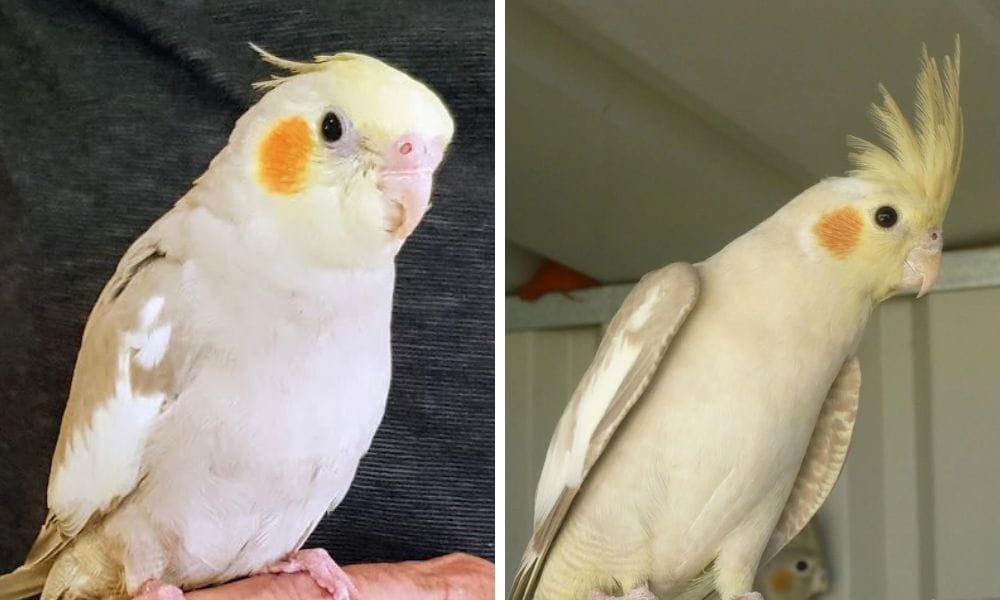
Recognizing Cinnamon Cockatiels
Identifying a cinnamon cockatiel is straightforward once you know what to look for. These birds typically exhibit a bright yellow face with the iconic orange cheek patch of the cockatiel species. However, the rest of their body showcases a soft, chocolate brown coloring rather than the standard grey. The yellow barring on their wings and tail is also less pronounced, contributing to their overall muted palette.
The cinnamon pied cockatiel is a variation that combines the cinnamon coloring with the pied pattern, resulting in a bird with patches of clear, bright yellow face and a mix of cinnamon and white feathers. This combination makes for a particularly striking bird that is typically higher priced in pet stores due to its rarity and demand.
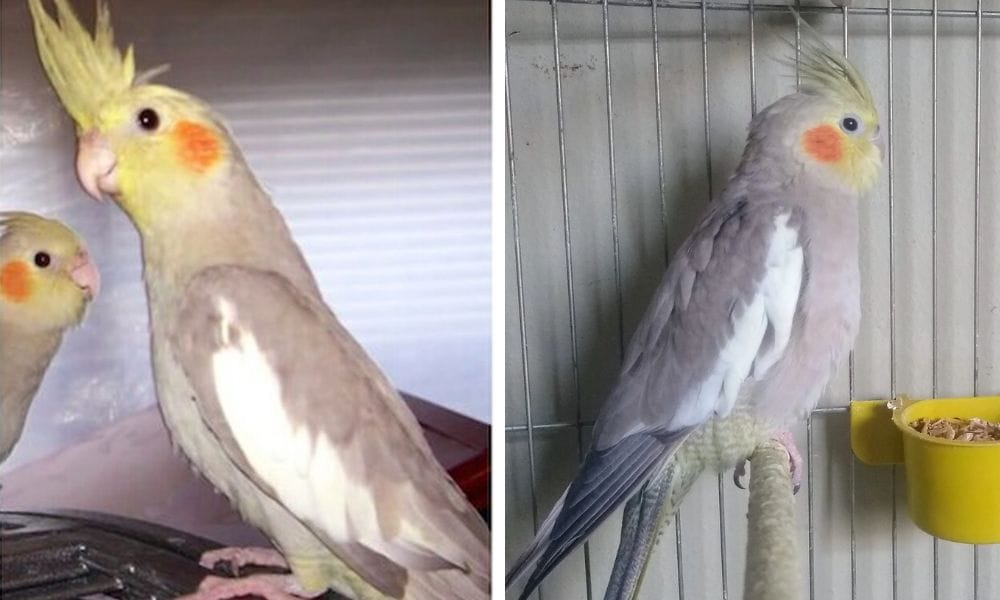
The Genetics Behind the Cinnamon Mutation
Delving into the genetics of cinnamon cockatiels reveals why they are so special. The cinnamon trait is a sex-linked recessive mutation, meaning that it is carried on the X chromosome. In birds, females have one X and one Y chromosome (ZW), while males have two X chromosomes (ZZ). This means that a male must carry two copies of the cinnamon gene to show the trait, while a female only needs one.
This genetic background also means that it is easier to sex cockatiels with the cinnamon mutation. Males will retain their bright yellow face and cinnamon coloring throughout their lives, while females may develop yellow barring or spots on the underside of their tail feathers after their first molt. Understanding these genetic nuances is crucial for bird breeders aiming to produce cinnamon cockatiels.
Caring for Your Cinnamon Cockatiel
Caring for a cinnamon cockatiel is similar to caring for any other cockatiel mutation. These hardy birds require a balanced diet, a spacious cage, and plenty of social interaction. A diet consisting of high-quality pellets, fresh fruits, and vegetables, along with the occasional treat, will keep your cinnamon cockatiel healthy and happy.
Cockatiels are social creatures and thrive on interaction with their owners. Cinnamon cockatiels, with their gentle nature, are no exception. They enjoy being part of the family and can learn to mimic sounds and even speak a few words. Regular playtime and training sessions will strengthen the bond between you and your feathered friend.
The Cinnamon Pearl Cockatiel
The cinnamon pearl cockatiel is another beautiful variant that combines the cinnamon mutation with the pearl pattern. These birds have a base of cinnamon coloring overlaid with a pattern of pale yellow and white pearling across their back, wings, and head. The pearl pattern is more prominent in females and can fade in males as they age.
Cinnamon pearl cockatiels are particularly sought after for their intricate and unique coloring. Like other cockatiel mutations, they make good pets and have similar care requirements. However, their stunning appearance often makes them the proud mom of many pictures shared by cockatiel owners online.
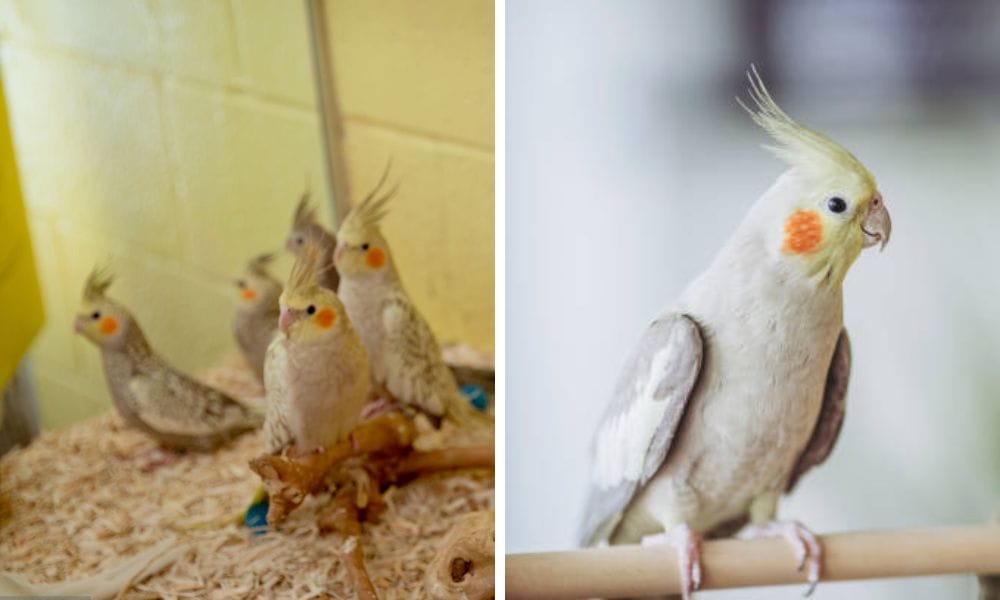
Breeding Cinnamon Cockatiels
Breeding cinnamon cockatiels can be a rewarding experience for bird breeders. Since the cinnamon trait is sex-linked, understanding the genetics involved is crucial for successful breeding. Pairing a cinnamon male with a normal female can produce cinnamon offspring of both sexes, while pairing a cinnamon female with a normal male will only produce cinnamon males.
It's important to note that breeding cockatiels requires a commitment to the health and well-being of the birds. Ensuring that breeding pairs are healthy, well-fed, and housed in a comfortable environment is essential. Additionally, breeders should be prepared to care for the young birds, which may include hand-feeding if necessary.
Diet and Nutrition for a Healthy Cinnamon Cockatiel
When it comes to keeping your pet cockatiel in top shape, diet is a crucial factor. Cinnamon cockatiels, like all pet birds, require a balanced mix of seeds, pellets, fruits, and vegetables to thrive. It's important to provide a variety of foods to ensure they receive all the necessary nutrients. Seeds should not make up the entirety of their diet, as they can lead to obesity and other health issues. Instead, aim for a diet that's rich in pellets specifically formulated for cockatiels, complemented with fresh produce.
In addition to a well-rounded diet, cinnamon cockatiels can benefit from occasional treats. However, these should be given sparingly. Foods high in vitamins A and C are particularly beneficial, as they help maintain a strong immune system. Remember to always provide fresh water daily, and avoid giving your feathered friend avocados, chocolate, or caffeine, as these can be toxic to birds. By paying close attention to your cockatiel's diet, you're setting the stage for a long and healthy life.
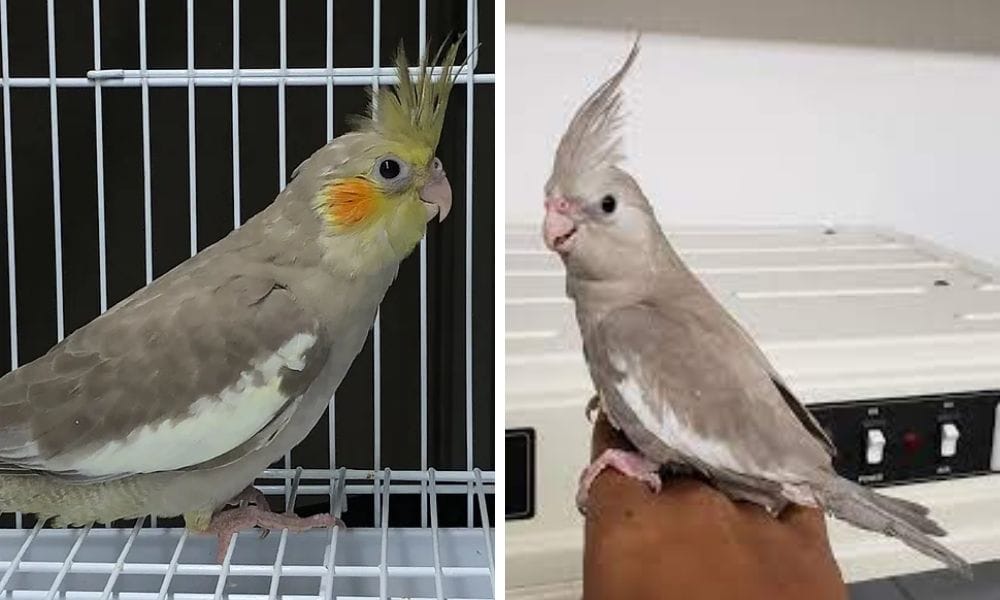
Understanding Cinnamon Cockatiel Behavior
Cockatiel behavior can be fascinating to observe, and understanding it is key to a harmonious relationship with your pet bird. Cinnamon cockatiels are known for their sociable and affectionate nature, often seeking attention and interaction from their human companions. They express their contentment through chirping, singing, and sometimes mimicking sounds they frequently hear. It's not uncommon for a pet cockatiel to develop a special bond with a particular member of the household, displaying excitement and affection when that person is near.
On the flip side, a cockatiel that is stressed or unhappy may exhibit signs such as hissing, feather plucking, or retreating to a corner of the cage. It's important to pay attention to these cues and address any issues promptly. Providing toys, a spacious cage, and regular out-of-cage time can help prevent boredom and encourage positive cockatiel behavior. Additionally, wings clipped to the appropriate length can prevent accidents and injuries, ensuring your cinnamon cockatiel remains safe while exploring its environment.
The Isabelle Cockatiel: A Cinnamon Variation
The isabelle cockatiel, also known as the fawn or Isabel, is a variation that combines the cinnamon mutation with the pastel face mutation. This results in a bird with a more subdued color palette, featuring a pale yellow face without the bright yellow and orange typically seen in other cockatiels.
Isabelle cockatiels are less common than pure cinnamon cockatiels and can be a bit more challenging to find. Bird stores that specialize in cockatiel mutations or breeders who focus on rarer varieties are your best bet for finding an isabelle cockatiel.
The Lifespan of Cinnamon Cockatiels
Cinnamon cockatiels, like all cockatiels, have a relatively long lifespan when cared for properly. With a balanced diet, regular veterinary care, and a safe living environment, these birds can live for 15 to 20 years or more. This long-term commitment means that potential cockatiel owners should be prepared for many years of companionship.
It's also worth noting that the lifespan of a cinnamon cockatiel can be affected by factors such as genetics, diet, exercise, and mental stimulation. Providing a variety of toys, perches, and opportunities for interaction can help keep your cockatiel both physically and mentally healthy.
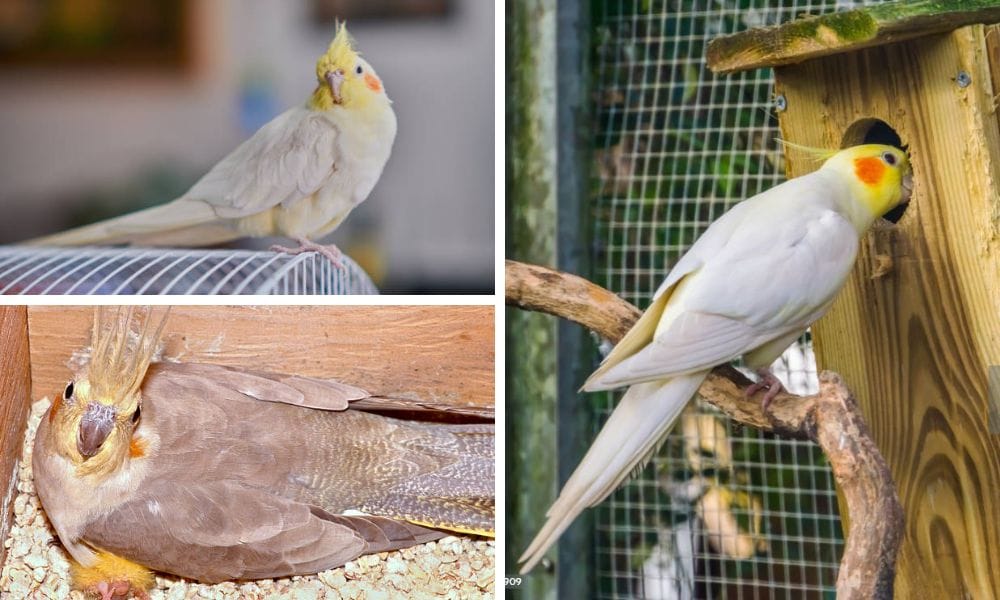
Common Health Issues in Cinnamon Cockatiels
While cinnamon cockatiels are hardy birds, they can be prone to certain health issues. Respiratory infections, feather plucking, and obesity are some of the common problems that can affect cockatiels. Regular check-ups with an avian veterinarian can help catch and treat these issues early.
A proper diet is also crucial in preventing health problems. Cockatiels that are fed a diet high in seeds may become overweight and suffer from fatty liver disease. Switching to a pellet-based diet supplemented with fresh fruits and vegetables can help maintain a healthy weight and prevent nutritional deficiencies.
Training and Socialization
Cinnamon cockatiels are intelligent birds that can benefit greatly from training and socialization. Teaching your cockatiel to step up onto your hand, come when called, and perform simple tricks can provide mental stimulation and strengthen your bond. Socialization with different people and exposure to new environments can also help prevent fearfulness and aggression.
It's important to use positive reinforcement techniques when training your cockatiel. Rewards such as praise, head scratches, and treats can encourage good behavior and make training sessions enjoyable for both you and your bird.
The Importance of a Suitable Habitat
Creating a suitable habitat for your cinnamon cockatiel is essential for its well-being. The cage should be large enough for the bird to stretch its wings and move around freely. It should also be equipped with perches of varying sizes to promote foot health, as well as toys to keep the bird entertained.
The location of the cage is equally important. It should be placed in a quiet area away from drafts and direct sunlight, but where the bird can still observe and interact with the family. Regular cleaning of the cage and accessories is necessary to prevent the spread of disease.
Cinnamon Cockatiels in the Wild
Cinnamon cockatiels are not found in the wild, as they are the result of selective breeding for color mutations. Wild cockatiels are native to Australia and are typically grey with white on the wings and the characteristic bright yellow face and orange cheek patch. The cinnamon mutation, along with other color mutations, has been developed by bird breeders over the years.
Despite their domestic origins, cinnamon cockatiels still retain many of the behaviors and instincts of their wild counterparts. They are flock-oriented birds that enjoy the company of other cockatiels and can become quite vocal, especially during dawn and dusk.
The Social Dynamics of Cinnamon Cockatiels
Cinnamon cockatiels are known for their social nature and can form strong bonds with their owners and other birds. They are happiest when they have regular interaction and can become lonely if left alone for long periods. If you're unable to spend a lot of time with your cockatiel, consider getting a second bird for companionship.
When introducing a new bird to your cinnamon cockatiel, it's important to do so gradually and under supervision. Cockatiels can be territorial, and it may take time for them to adjust to a new member of the flock. Once they have bonded, however, they can provide each other with companionship and entertainment.
Summary
The cinnamon cockatiel is a delightful addition to the parrot family, offering a unique blend of beauty and personality. Understanding their genetic makeup, care requirements, and social needs can help ensure a fulfilling relationship between these birds and their owners. Whether you're a seasoned bird enthusiast or considering a cinnamon cockatiel as your first pet, these charming birds are sure to bring joy and color into your life.
FAQ Section
Q: How can I tell if my cinnamon cockatiel is male or female? A: Male cinnamon cockatiels typically have a brighter yellow face and retain their cinnamon coloring without yellow barring or spots on the underside of their tail feathers. Females may develop yellow barring or spots after their first molt, which can help determine their sex.
Q: Are cinnamon cockatiels good for first-time bird owners? A: Yes, cinnamon cockatiels are considered good pets for first-time bird owners due to their friendly nature and relatively easy care requirements. However, it's important to research and understand the commitment involved in owning a cockatiel.
Q: Can cinnamon cockatiels talk or mimic sounds? A: Cinnamon cockatiels, like other cockatiels, have the ability to mimic sounds and may learn to say a few words. However, their vocal abilities are not as advanced as some larger parrots. Regular interaction and training can encourage them to develop their mimicking skills.
